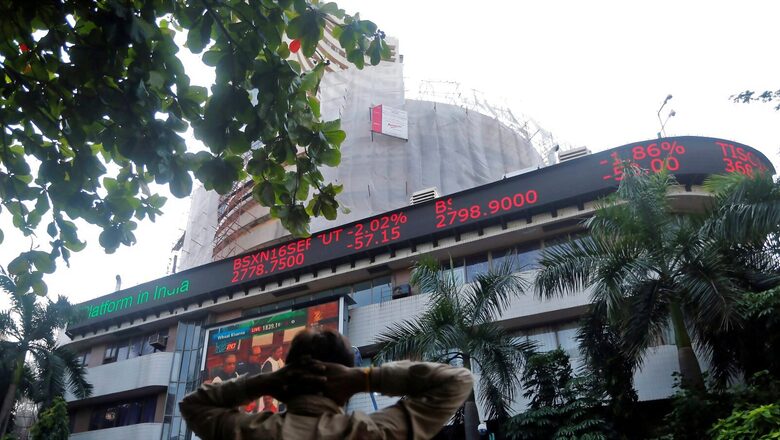
views
Key benchmark indices tanked after inflation data was released in US overnight. The US CPI print eased to 8.3 per cent in April from 8.5 per cent in March, but was still higher than analyst estimates of 8.1 per cent, suggesting while inflation in the world’s largest economy may have peaked, any further easing would be a slow process and that an aggressive Fed stance may continue. Prashanth Tapse, Vice President (Research), Mehta Equities Ltd., said: “Undoubtedly, the biggest negative catalyst continues to be Inflation all over global economics. The latest U.S consumer price index (CPI) data released for April rose at an annual rate of 8.3 per cent– down from March’s 8.5 per cent pace to mark the first drop in inflation in eight months but still concerning signs.
The economic reading helped the dollar stay near a two-decade high, hurting emerging market equities. At 9.42 am, the BSE Sensex was trading 1,024.29 points or 1.89 per cent lower at 53,064. Nifty50 was trading at 15,865, down 301 points or 1.87 per cent. Midcap and smallcap indices lost up to 2.2 per cent.
Back home, the market was also keenly awaiting the domestic CPI figures, which are scheduled for post market hours today. Nirmal Bang Institutional Equities said CPI inflation is likely to rise to 7.4 per cent in April from 6.95 per cent in March, led by higher prices of edible oil and fuel and a gradual pass-through of rise in input costs to retail prices as well as inflation in the services sector, supported by the opening up of the economy.
What Should Investors Do?
However, the current dip provides a good opportunity to add stocks and India is currently in a better position in terms of economic strength compared to its peers in the medium to long term. Investors must be cautious during these volatile times and follow these rules to achieve good risk-adjusted return:
Buy For the Long Term
Santosh Meena, Head of Research, Swastika Investmart Ltd., said: “Control over our emotions especially greed and fear is necessary, having a short-term mentality is dangerous as investors might get stuck in fundamentally poor stocks or at a very high price. Investing for the long term has two advantages, first, you can take advantage of the power of compounding, and second, you can sleep peacefully.”
Investors must perform due diligence before investing and invest in those stocks where they have a complete understanding about the underlying fundamentals. One must study the business model, management quality, competitive landscape, financials, and future growth prospects, before investing in any stock. This will help them to separate the wheat from the chaff. This is a basic requirement before investing otherwise mutual fund route is more appropriate.
Understand risks
Good investors never commit money into an investment without total awareness of the risks (and potential rewards) involved. By doing so, they assume full responsibility for the fluctuations that may ensue during the investment life cycle.
Take advantage of the dip to enter into quality names
The current scenario, where the environment is full of uncertainty and negative sentiments is the best time to add stocks that have good fundamentals, growth visibility, competitive advantages, and reasonable valuations.
Wait for Markets to Rebound
Yash Gupta, Equity Research Analyst, Angel One Ltd, said: “We expect markets to be volatile in the near term depending on the domestic news as well as foreign markets. We suggest long-term investors deploy 50 per cent of the new fund and for the remaining wait for the market to rebound.”
Read all the Latest Business News here




















Comments
0 comment